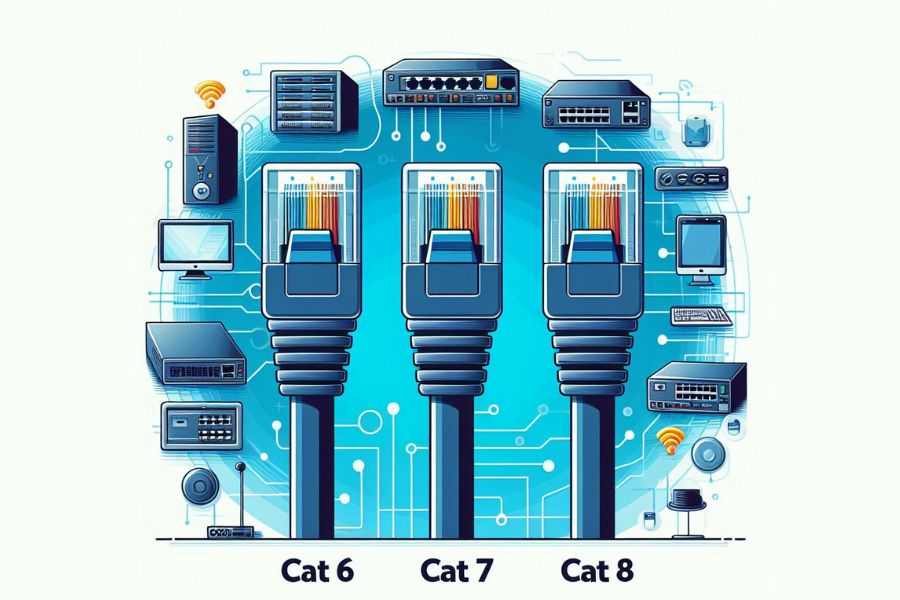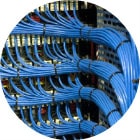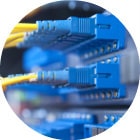If your organization wants to upgrade its Ethernet cables for better connectivity, it’s important to understand the differences between the options available: CAT 6, CAT 7, and CAT 8.
Ethernet cables help speed up data transfers between devices. That’s why businesses are investing in better networking solutions, with the global Ethernet cable market expected to surpass $30 billion by 2029.
The basics of CAT 6, CAT 7, and CAT 8 cables:
CAT 6: This is the sixth generation of Ethernet cabling. It’s been around since the early 2000s and is still popular for high-speed internet connections. CAT 6 cables meet building code standards and are cheaper than newer options. They can handle data transfer rates of up to 10 gigabits per second over 55 meters. There’s also CAT 6A, which offers even better performance.
CAT 7: Unlike what some people think, CAT 7 isn’t the next version after CAT 6. It’s a proprietary design, not an official standard from the Institute of Electrical and Electronics Engineers (IEEE). CAT 7 cables can support transfer rates of up to 40Gbps over short distances, but they’re not widely used.
CAT 8: This is the real successor to CAT 6 and is recognized by the IEEE. It’s compatible with older cables and offers faster speeds over short distances — up to 40Gbps over 30 meters. It also has a bandwidth twice that of CAT 7.
Where you might use each type of cable:
CAT 6: Great for homes and offices to connect computers, routers, and other devices. CAT 6 patch cables are good for most networking needs, like connecting smart TVs, printers, and security systems.
CAT 7: Used in industries that need high-performance networks. They’re durable and can handle tough conditions, making them suitable for outdoor use and large gaming setups.
CAT 8: Commonly used in data centers and commercial environments where fast, reliable connections are crucial.
To decide which cable is right for your business, consider your networking needs and compare them with what each type of cable offers, or give us. acall to get advice from one of our tech experts to assess your options properly.









